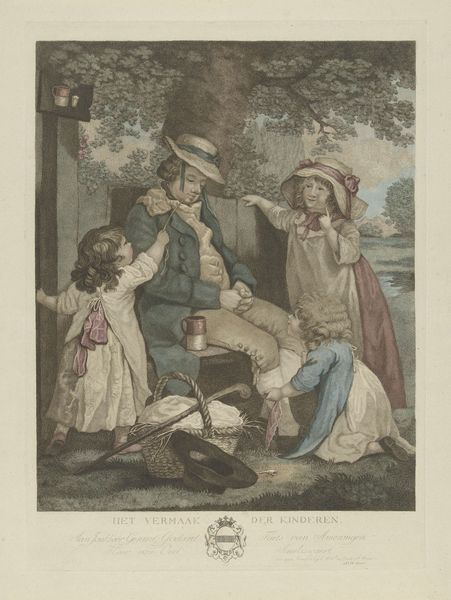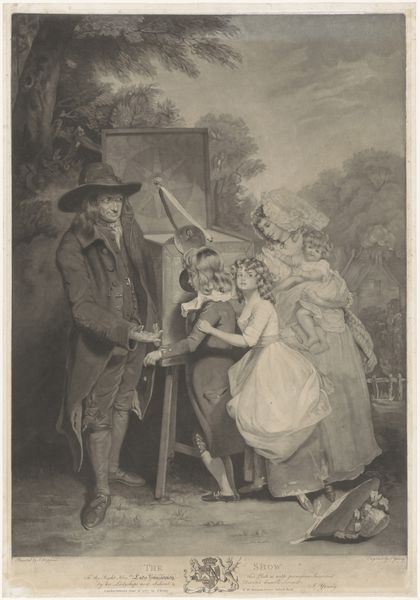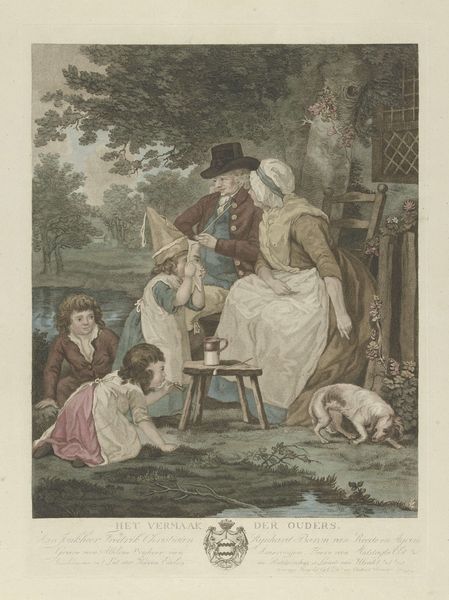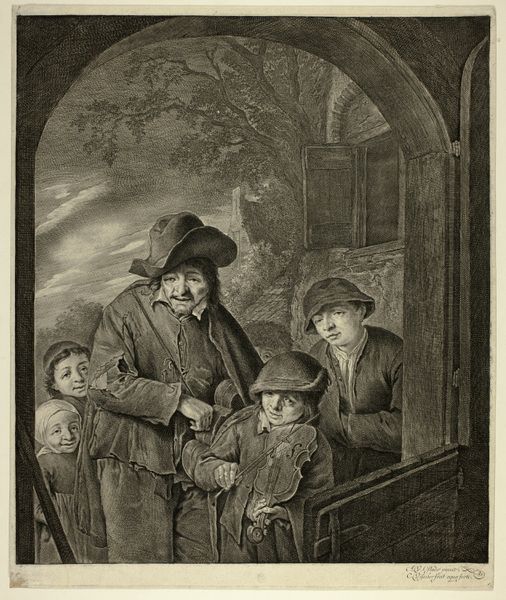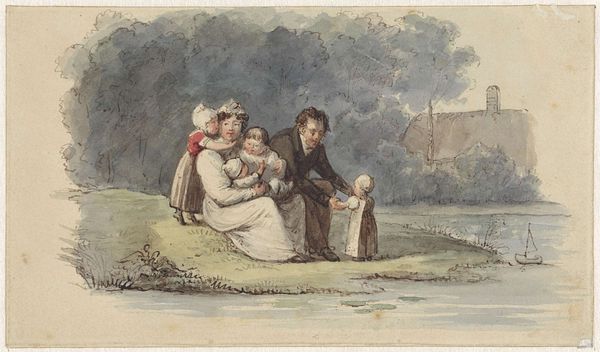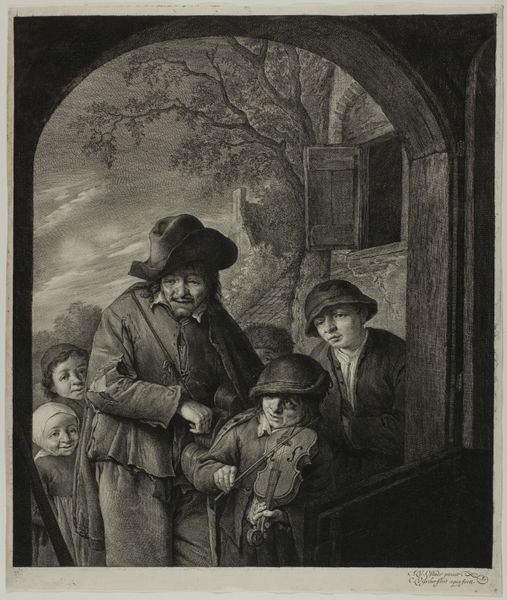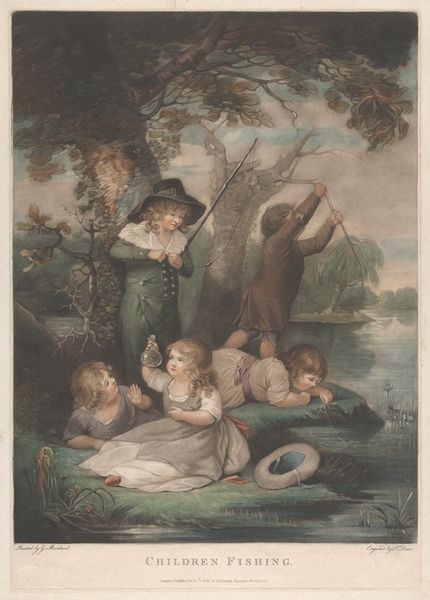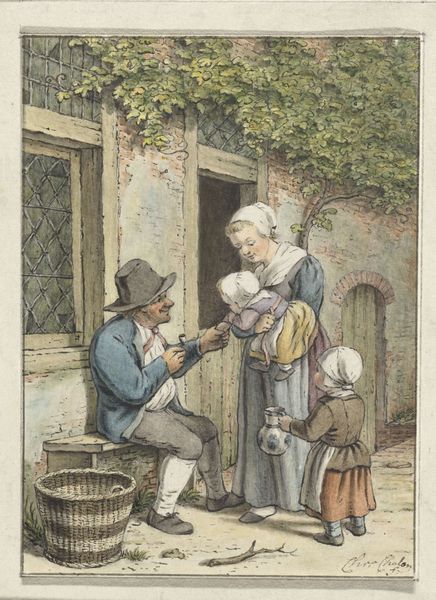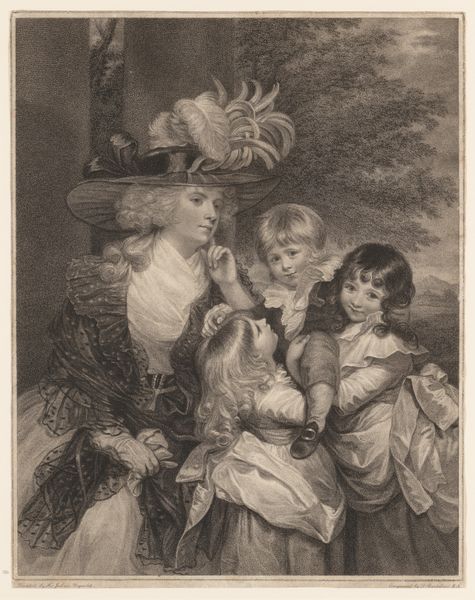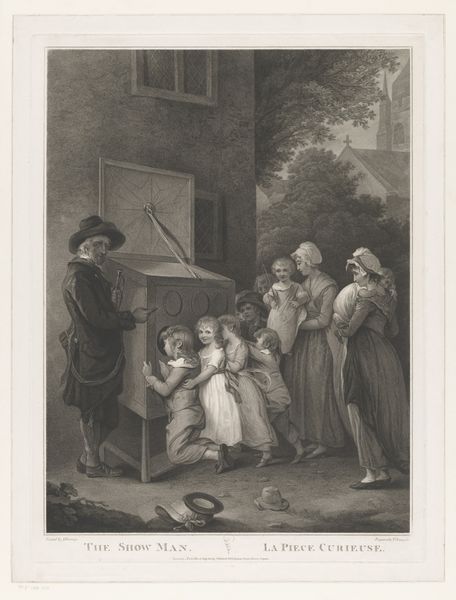
painting, watercolor
#
portrait
#
figurative
#
painting
#
charcoal drawing
#
oil painting
#
watercolor
#
group-portraits
#
romanticism
#
watercolour illustration
#
genre-painting
#
watercolor
Copyright: Public Domain: Artvee
George Morland painted ‘Childish Amusement’ at the height of his career in the 1790s, using oil paint on canvas. Morland was celebrated for his rustic scenes of English life, and this painting exemplifies that popularity, but with an interesting twist. Notice how the painting depicts a scene of playful children disrupting a drunken man's slumber. The children, in their innocence, represent a stark contrast to the man's inebriated state, a not-so-subtle critique of the social ills of late 18th-century England, particularly the widespread problem of public intoxication. We can read this image through its historical context. Morland made this artwork in a time of emerging social reform movements that questioned the morality of the poor. The presence of the "Burton Ale" sign suggests a common scene outside public houses, making the work a social commentary on the impact of alcohol on family life. By exploring period documents, prints, and literature, we can understand how artists used their work to participate in these debates. Art, after all, is deeply embedded in the social and institutional histories of its time.
Comments
No comments
Be the first to comment and join the conversation on the ultimate creative platform.
